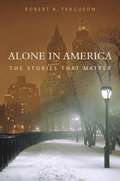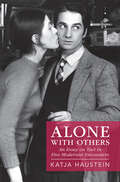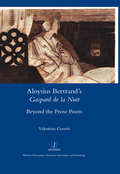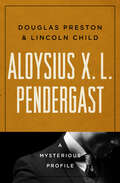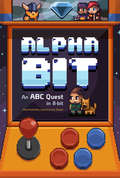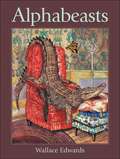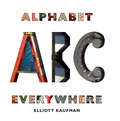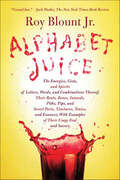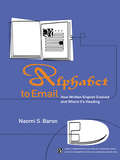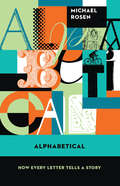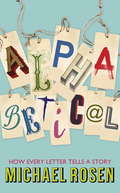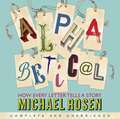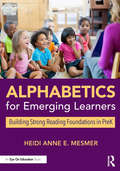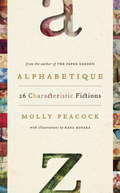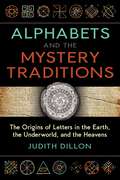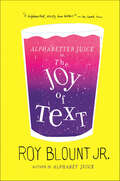- Table View
- List View
Alone in America
by Robert A. FergusonRobert A. Ferguson investigates the nature of loneliness in American fiction, from its mythological beginnings in Rip Van Winkle to the postmodern terrors of 9/11. At issue is the dark side of a trumpeted American individualism. The theme is a vital one because a greater percentage of people live alone today than at any other time in U. S. history. The many isolated characters in American fiction, Ferguson says, appeal to us through inward claims of identity when pitted against the social priorities of a consensual culture. They indicate how we might talk to ourselves when the same pressures come our way. In fiction, more visibly than in life, defining moments turn on the clarity of an inner conversation. Alone in America tests the inner conversations that work and sometimes fail. It examines the typical elements and moments that force us toward a solitary state-failure, betrayal, change, defeat, breakdown, fear, difference, age, and loss-in their ascending power over us. It underlines the evolving answers that famous figures in literature have given in response. Figures like Mark Twain’s Huck Finn and Toni Morrison’s Sethe and Paul D. , or Louisa May Alcott’s Jo March and Marilynne Robinson’s John Ames, carve out their own possibilities against ruthless situations that hold them in place. Instead of trusting to often superficial social remedies, or taking thin sustenance from the philosophy of self-reliance, Ferguson says we can learn from our fiction how to live alone.
Alone with Others: An Essay on Tact in Five Modernist Encounters
by Katja HausteinTimes of crisis expose how we experience social, physical, and emotional forms of distance. Alone with Others explores how these experiences overlap, shaping our coexistence. Departing from conventional debates that associate intimacy with affection and distance with alienation, Haustein introduces tact as a particular mode of feeling one's way and making space in the sphere of human interaction. Reconstructing tact's conceptual history from the late eighteenth century to the present, she then focuses on three specific periods of socio-political upheaval: the two World Wars, and 1968. In five reading encounters with Marcel Proust, Helmuth Plessner, Theodor Adorno, François Truffaut, and Roland Barthes, Haustein invites us to reconsider our own ways of engaging with other people, images, and texts, and to gauge the significance of tact today. This title is part of the Flip it Open Programme and may also be available Open Access. Check our website Cambridge Core for details.
Along These Lines: Writing Paragraphs and Essays With Writing From Reading Strategies (Seventh Edition)
by John Sheridan Biays Carol WershovenClear, effective writing is an increasingly important skill in today’s world. With its intensive coverage of the writing process, Along These Lines: Writing Paragraphs and Essays, Seventh Edition helps developing writers acquire and improve on these skills—and in the process, become more effective learners. Biays and Wershoven guide students step by step through the writing process with in-depth instruction on grammar, paragraph construction, and short essays. Each chapter offers numerous individual and collaborative exercises along with contextualized practical writing applications such as workplace writing, classroom-centered and academic material. Self-contained chapters provide a flexible framework that can accommodate myriad learning styles and instructional preferences. Encouraging critical thinking and personal engagement, the authors provide invaluable resources, interactive exercises, and continual reinforcement of the writing process to give writers a solid foundation for future success.
Along These Lines: Writing Sentences and Paragraphs (Fifth Edition)
by Pamela Arlov John Sheridan Biays Carol WershovenAlong These Lines: Writing Sentences and Paragraphs, 5/e prepares developmental writing students for success in future composition courses by offering thorough grammar instruction and in-depth coverage/reinforcement of the writing process. Filled with individual and collaborative exercises as well as practical writing applications, the text begins with the principles of grammar and progresses to comprehensive chapters on crafting paragraphs and short essays. ATL/S&P also includes a chapter on "Writing from Reading," incorporates appealing visuals, offers topical, thought-provoking readings, and provides numerous writing options to engage students as they sharpen their critical- thinking and writing skills.
Aloysius Bertrand’s Gaspard de la Nuit Beyond the Prose Poem: Aloysius Bertrand’s Gaspard de la Nuit Beyond the Prose Poem
by Valentina GosettiAloysius Bertrand’s Gaspard de la Nuit (1842) is a familiar title to music lovers, thanks to Ravel’s piano work of the same name, and to specialists of French literature, especially those interested in Baudelaire’s prose poetry. Yet until very recently the collection and its author have generally been viewed almost exclusively through the prism of their pioneering role in the development of the prose poem. By placing Bertrand back in his original context, adopting a comparative approach and engaging with recent critical work on the collection, Valentina Gosetti proposes a substantial reassessment of Gaspard de la Nuit and promotes a new understanding of Bertrand in his own terms, rather than those of his successors. Through his playful and ironic reinterpretation of Romantic clichés, and his overt defiance of the boundaries of poetry and beauty, Bertrand emerges as a fascinating figure in his own right. This book is one of the first full-length studies of Bertrand’s work, and it will be of particular interest to specialists of the nineteenth century and of provincial literature, and to students of nineteenth-century poetry or the fantastic.
Aloysius X. L. Pendergast: A Mysterious Profile (Mysterious Profiles)
by Douglas Preston Lincoln Child#1 New York Times–bestselling authors: Get to know the ruthless, mysterious FBI agent, &“one of thrillerdom&’s most exciting and intriguing series leads&” (Booklist). Acclaimed as &“a modern-day Sherlock Holmes&” (Associated Press) with a brilliant mind, a cultured manner, and a dark edge, Special Agent Aloysius X. L. Pendergast has calmly looked evil in the face throughout the long-running series that includes such novels as The Cabinet of Curiosities—named one of NPR&’s 100 Best Thrillers Ever—and Crooked River. In this essay, Douglas Preston and Lincoln Child discuss how the character came to be created, his enigmatic backstory, and the history of their own wildly successful writing partnership. &“The most charming, intelligent, cool, and creepy agent ever written.&” —Suspense Magazine &“Every bit the modern equivalent of Sherlock Holmes and Hercule Poirot.&”―Providence Journal
Alpha Masculinity: Hegemony in Language and Discourse (Palgrave Studies in Language, Gender and Sexuality)
by Eric Louis RussellThis book examines the linguistic and discursive mechanisms that realize the mythological American Alpha Male. Providing an in-depth dissection of corpora from an online socio-commercial community, a pop-psychology guru, and fictional gay erotica, it unravels the ways language, gender, and hegemony play out in this ideological figure of neopositive, essentialist masculinity. Through a detailed, multi-level analysis, Russell shows how the Alpha figure combines elements of dominance, normativity, and androcentrism and how these forces intersect with neoliberal and pseudoscientific discourses to establish a uniquely hybridized male hegemony, one that is familiar to most, but whose internal mechanisms remain largely unquestioned and unexamined. This book will be of interest to academic scholars in sociolinguistics, discourse analysis, cultural studies, and gender and sexualities studies.
Alpha-Phonics: A Primer for Beginning Readers
by Samuel L. BlumenfeldThe fabled Alpha-Phonics systematic phonics instruction program used by 100s of thousands since it was introduced in the late 1970's. Alpha-Phonics is probably the simplest, most effective and reasonably priced phonics instruction programs available anywhere.
AlphaBit: An ABC Quest in 8-Bit
by Chronicle BooksInspired by classic video games of the '80s and '90s, this clever board book sets out to level up the ABCs. Within these pages lies an alphabet adventure, rendered entirely in striking 8-bit artwork. Young gamers will love guiding their daring hero through the story to learn new words, discover hidden pictures, and find the missing treasure in an epic quest that will have kids and adults ready to press restart!
Alphabeasts
by Wallace EdwardsFrom the weird and wonderful imagination of an amazing new artist comes an alphabet book like no other. Kids will delight in discovering animals from A to Z living together in an old Victorian mansion.
Alphabedtime
by Susanna Leonard HillA cast of adorable alphabet characters make this clever bedtime story a standout!Suppertime&’s over. Everyone&’s fed.Alpha Mom says, TIME FOR BED! It&’s a busy night for the Alphabet Family—after all, there are 26 kiddos to get ready for bed. A, B, and C declare they are not ready, and Impish I and Jazzy J don&’t want to settle down, but by toothbrushing-time the crew seems to be headed in the right direction. Bath time requires six bathtubs and is super-splashy—and getting into jammies is no joke—but finally, after a story has been read and they are all tucked in tight, peace should reign. Except what&’s this? When Mom turns off the light, it&’s an Alpha pillow fight! Toddlers are sure to get a huge kick out of this lively alpha family—and hopefully following each and every little letter&’s antics will tucker them out!
Alphabet Boats
by Samantha R. VamosSet sail and learn the ABCs with a boat for each letter!Discover twenty-six types of vessels, from the more common--canoe and motorboat--to the unusual--umiak and Q-boat. Just like in Alphabet Trucks and Alphabet Trains, colorful art includes the letters of the alphabet hidden (and not-so-hidden) in supporting roles in the illustrations. The text features familiar as well as unusual boats from around the world, packing in tons of instant kid appeal, and upper and lowercase letters are integrated into the action of the art rather than solely in the typography. Back matter includes age-appropriate facts about each featured boat.
Alphabet Cards, Grade K (Into Reading)
by Houghton Mifflin Harcourt Publishing CompanyNIMAC-sourced textbook
Alphabet Everywhere
by Elliott KaufmanExplore the world in a new way and start finding your own alphabet...everywhere! There is a world of letters just waiting to be discovered in the world around us -- if we know how to look for it. In this engaging and delightful book, photographer Elliott Kaufman reveals the "secret" life of the alphabet through his photographs, showing how letters can be found in things we encounter everyday. Each letter of the alphabet is represented by multiple images, each unintentionally created by the intersection of architectural details, shadows, light, or natural elements as caught by Kaufman's keen eye. Some are obvious, while others demand a little more imagination to recognize, inviting the readers to start their own game of hunting for letters! This fun approach also reinforces the notion that learning to see the familiar in new ways encourages visual literacy and creativity.
Alphabet Juice: The Energies, Gists, And Spirits Of Letters, Words, And Combinations Thereof; Their Roots, Bones, Innards, Piths, Pips, And Secret Parts, Tinctures, Tonics, And Essences; With Examples Of Their Usage Foul And Savory
by Roy Blount Jr.Ali G: How many words does you know?Noam Chomsky: Normally, humans, by maturity, have tens of thousands of them.Ali G: What is some of 'em?—Da Ali G ShowDid you know that both mammal and matter derive from baby talk? Have you noticed how wince makes you wince? Ever wonder why so many h-words have to do with breath?Roy Blount Jr. certainly has, and after forty years of making a living using words in every medium, print or electronic, except greeting cards, he still can't get over his ABCs. In Alphabet Juice, he celebrates the electricity, the juju, the sonic and kinetic energies, of letters and their combinations. Blount does not prescribe proper English. The franchise he claims is "over the counter." Three and a half centuries ago, Thomas Blount produced Blount's Glossographia, the first dictionary to explore derivations of English words. This Blount's Glossographia takes that pursuit to other levels, from Proto-Indo-European roots to your epiglottis. It rejects the standard linguistic notion that the connection between words and their meanings is "arbitrary." Even the word arbitrary is shown to be no more arbitrary, at its root, than go-to guy or crackerjack. From sources as venerable as the OED (in which Blount finds an inconsistency, at whisk) and as fresh as Urbandictionary.com (to which Blount has contributed the number-one definition of "alligator arm"), and especially from the author's own wide-ranging experience, Alphabet Juice derives an organic take on language that is unlike, and more fun than, any other.
Alphabet Trains (Alphabet Vehicles Ser.)
by Samantha R. VamosAll aboard for a train ride through the alphabet! Whether chug-chug-chugging up a mountainside in an Incline train or zipping at super speed in a Bullet train, trains will get you where you need to be—A to Z!There is a train—some familiar and some unusual—for every letter of the alphabet. Trains are used all over the world for carrying people and cargo from place to place. With a bouncy rhyming text, and clever illustrations full of visual cues, young readers will love learning all about trains. A companion to the Children's Book Award nominated Alphabet Trucks!· CCBC Choices 2016: Annual best-of-the-year list of the Cooperative Children&’s Book Center.
Alphabet to Email: How Written English Evolved and Where It's Heading
by Naomi S. BaronIn Alphabet to Email Naomi Baron takes us on a fascinating and often entertaining journey through the history of the English language, showing how technology - especially email - is gradually stripping language of its formality.Drawing together strands of thinking about writing, speech, pedagogy, technology, and globalization, Naomi Baron explores the ever-changing relationship between speech and writing and considers the implications of current language trends on the future of written English.Alphabet to Email will appeal to anyone who is curious about how the English language has changed over the centuries and where it might be going.
Alphabetical: How Every Letter Tells a Story
by Michael RosenHow on Earth did we fix upon our twenty-six letters, what do they really mean, and how did we come to write them down in the first place? Michael Rosen takes you on an unforgettable adventure through the history of the alphabet in twenty-six vivid chapters, fizzing with personal anecdotes and fascinating facts. Starting with the mysterious Phoenicians and how sounds first came to be written down, he races on to show how nonsense poems work, pins down the strange story of OK, traces our five lost letters and tackles the tyranny of spelling, among many many other things. His heroes of the alphabet range from Edward Lear to Phyllis Pearsall (the inventor of the A-Z), and from the two scribes of Beowulf to rappers. Each chapter takes on a different subject - whether it's codes, umlauts or the writing of dictionaries. Rosen's enthusiasm for letters positively leaps off the page, whether it's the story of his life told through the typewriters he's owned or a chapter on jokes written in a string of gags and word games. This is the book for anyone who's ever wondered why Hawaiian only has a thirteen-letter alphabet or how exactly to write down the sound of a wild raspberry.
Alphabetical: How Every Letter Tells a Story
by Michael RosenFrom minding your Ps and Qs to wondering why X should mark the spot, Alphabetical is a book for everyone who loves words and language. Whether it's how letters are arranged on keyboards or Viking runes, textspeak or zip codes, this book will change the way you think about letters for ever. How on Earth did we fix upon our twenty-six letters, what do they really mean, and how did we come to write them down in the first place? Michael Rosen takes you on an unforgettable adventure through the history of the alphabet in twenty-six vivid chapters, fizzing with personal anecdotes and fascinating facts. Starting with the mysterious Phoenicians and how sounds first came to be written down, he races on to show how nonsense poems work, pins down the strange story of OK, traces our seven lost letters and tackles the tyranny of spelling, among many, many other things. His heroes of the alphabet range from Edward Lear to Phyllis Pearsall (the inventor of the A-Z), and from the two scribes of Beowulf to rappers. Each chapter takes on a different subject - codes, umlauts or the writing of dictionaries. Rosen's enthusiasm for letters positively leaps off the page, whether it's the story of his life told through the typewriters he's owned or a chapter on jokes written in a string of gags and word games. So if you ever wondered why Hawaiian only has a thirteen-letter alphabet or how exactly to write down the sound of a wild raspberry, read on . . .
Alphabetical: How Every Letter Tells a Story
by Michael RosenFrom minding your Ps and Qs to wondering why X should mark the spot, Alphabetical is a book for everyone who loves words and language. Whether it's how letters are arranged on keyboards or Viking runes, textspeak or zip codes, this book will change the way you think about letters for ever. How on Earth did we fix upon our twenty-six letters, what do they really mean, and how did we come to write them down in the first place? Michael Rosen takes you on an unforgettable adventure through the history of the alphabet in twenty-six vivid chapters, fizzing with personal anecdotes and fascinating facts. Starting with the mysterious Phoenicians and how sounds first came to be written down, he races on to show how nonsense poems work, pins down the strange story of OK, traces our seven lost letters and tackles the tyranny of spelling, among many, many other things. His heroes of the alphabet range from Edward Lear to Phyllis Pearsall (the inventor of the A-Z), and from the two scribes of Beowulf to rappers. Each chapter takes on a different subject - codes, umlauts or the writing of dictionaries. Rosen's enthusiasm for letters positively leaps off the page, whether it's the story of his life told through the typewriters he's owned or a chapter on jokes written in a string of gags and word games. So if you ever wondered why Hawaiian only has a thirteen-letter alphabet or how exactly to write down the sound of a wild raspberry, read on . . .
Alphabetical: How Every Letter Tells a Story
by Michael RosenFrom minding your Ps and Qs to wondering why X should mark the spot, Alphabetical is a book for everyone who loves words and language. Whether it's how letters are arranged on keyboards or Viking runes, textspeak or zip codes, this book will change the way you think about letters for ever. How on Earth did we fix upon our twenty-six letters, what do they really mean, and how did we come to write them down in the first place? Michael Rosen takes you on an unforgettable adventure through the history of the alphabet in twenty-six vivid chapters, fizzing with personal anecdotes and fascinating facts. Starting with the mysterious Phoenicians and how sounds first came to be written down, he races on to show how nonsense poems work, pins down the strange story of OK, traces our seven lost letters and tackles the tyranny of spelling, among many, many other things. His heroes of the alphabet range from Edward Lear to Phyllis Pearsall (the inventor of the A-Z), and from the two scribes of Beowulf to rappers. Each chapter takes on a different subject - whether it's codes, umlauts or the writing of dictionaries. Rosen's enthusiasm for letters positively leaps off the page, whether it's the story of his life told through the typewriters he's owned or a chapter on jokes written in a string of gags and word games. So if you ever wondered why Hawaiian only has a thirteen-letter alphabet, why X should mark the spot or became shorthand for Christmas or how exactly to write down the sound of a wild raspberry, read on . . .(P)2013 Hodder & Stoughton
Alphabetics for Emerging Learners: Building Strong Reading Foundations in PreK
by Heidi Anne MesmerDiscover how to help PreK students develop pre-reading competencies that build capacity for future reading phonological awareness, print concepts, and alphabetics. Research-based and accessible, this essential guidebook helps readers sidestep common errors and create engaging, child-appropriate curriculum that lays a strong foundation for future reading skills. Filled with effective resources, activities, and a simple scope and sequence to guide instruction, this critical toolkit equips educators to set emerging learners up for success.
Alphabetique, 26 Characteristic Fictions
by Molly PeacockTake the sumptuousness of Molly Peacock's own #1 bestselling The Paper Garden, the extraordinary creative variety of The Bedside Book of Birds, and the cat-nip-for-language-geeks appeal of Eats, Shoots and Leaves, and wrap it around tales rich with wisdom and humanity, and you get Alphabetique: the most gorgeous gift book of the season. Molly Peacock has written a new classic, a book of magical tales inspired by the lives of the letters of the alphabet. Alphabetique, or Tales from the Lives of the Letters is one-of-a-kind, but nevertheless fits perfectly with Molly Peacock's extraordinary body of work, drawing on the same wellsprings of creativity and artistry as her poetry and her nonfiction, especially The Paper Garden. These 26 charming, incisive, sensual stories of love, yearning, and self-discovery are complimented by Kara Kosaka's layered, jewel-bright collages.
Alphabets and the Mystery Traditions: The Origins of Letters in the Earth, the Underworld, and the Heavens
by Judith DillonReveals the esoteric mysteries encoded in the order of the alphabet• Explores the secrets hidden in our alphabet and how each letter represented a specific stage on the alchemical path toward enlightenment• Divides our alphabet&’s sequence of letters into three distinct parts: the first representing Earth and the natural year, the second the Underworld and the hero&’s journey, and the third the Heavens and astronomical cycles• Reveals how the ancient secrets encoded in the numerical order of the alphabet can be found in Mystery Traditions and divination systems throughout the worldOur alphabet hides a Mystery older than its magic of turning sound into shapes. Secrets lie in the choice of objects chosen to represent early alphabet letters and their order, a pattern inherited by numerous traditions, an alchemical spell to return the sun from the dark and guide the soul toward enlightenment.Revealing the spell hidden in our alphabet, Judith Dillon explores the importance of the placement of each letter in early alphabets and how each letter represented a specific step on the alchemical path of self-transformation. She investigates the alphabet&’s spread around the world, beginning in Egypt and then spreading through Hebrew, Greek, and other ancient systems of writing and divination. These include Germanic Runes, Celtic Oghams, Tarot cards, the I Ching, and the wisdom of Mother Goose. Comparing the mythic attributes of many traditions, the author reveals the commonality of a numerical placement of symbols and how the hidden message was adapted by multiple peoples using objects and shapes from their own traditions.Examining the esoteric wisdom encoded in the alphabet, Dillon divides the numerical sequence of letters into three distinct parts. The first family of letters represents the Earth and describes the cycle of the natural year. The second family represents the Underworld and symbolizes the hero&’s journey through judgments and death into the light of day. The third represents the Heavens and its astronomical cycles. Together, our alphabet symbols are a spell of alchemical stages on a path toward the light. Hidden in plain sight, our alphabet represents a transmission of ancient wisdom, the great alchemical Mystery of transforming dark earth into shining gold, of releasing the soul from the bonds of matter into the gold of enlightenment.
Alphabetter Juice, or The Joy of Text
by Roy Blount Jr.Fresh-squeezed Lexicology, with TwistsNo man of letters savors the ABC's, or serves them up, like language-loving humorist Roy Blount Jr. His glossary, from adhominy to zizz, is hearty, full bodied, and out to please discriminating palates coarse and fine. In 2008, he celebrated the gists, tangs, and energies of letters and their combinations in Alphabet Juice, to wide acclaim. Now, Alphabetter Juice. Which is better.This book is for anyone—novice wordsmith, sensuous reader, or career grammarian—who loves to get physical with words. What is the universal sign of disgust, ew, doing in beautiful and cutie? Why is toadless, but not frogless, in the Oxford English Dictionary? How can the U. S. Supreme Court find relevance in gollywoddles? Might there be scientific evidence for the sonicky value of hunch? And why would someone not bother to spell correctly the very word he is trying to define on Urbandictionary.com?Digging into how locutions evolve, and work, or fail, Blount draws upon everything from The Tempest to The Wire. He takes us to Iceland, for salmon-watching with a "girl gillie," and to Georgian England, where a distinguished etymologist bites off more of a "giantess" than he can chew. Jimmy Stewart appears, in connection with kludge and the bombing of Switzerland. Litigation over supercalifragilisticexpialidocious leads to a vintage werewolf movie; news of possum-tossing, to metanarrative.As Michael Dirda wrote in The Washington Post Book World, "The immensely likeable Blount clearly possesses what was called in the Italian Renaissance ‘sprezzatura,' that rare and enviable ability to do even the most difficult things without breaking a sweat." Alphabetter Juice is brimming with sprezzatura. Have a taste.
